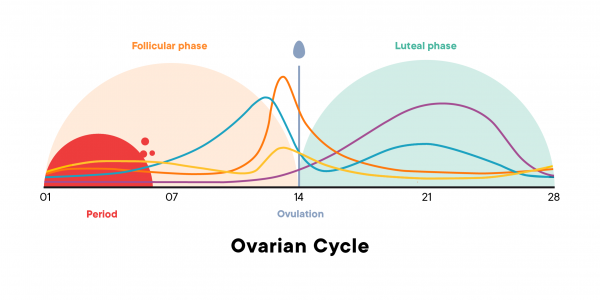Whether you run marathons, compete in triathlons, go to CrossFit classes or practice yoga, training works similarly for all sexes. As you train longer and harder, you get more fit, and performance improves but there is more to the female story.
For all genders, it is tempting to compare our bodies and experiences, but this never goes well. For example, as women, we have smaller hearts, smaller lungs, lower maximum heart rates, and less cardiac output than men. Our smaller hearts, lungs, and lower oxygen-carrying capacity mean we have a lower max VO2 (the maximum amount of oxygen your body can use to make fuel) than men. If two athletes are doing the same amount of work, the woman will have a higher heart rate and need more oxygen to finish the job. In addition to our physiologic differences, our hormones play a huge role in every physical function of living.
The physiologic impact is real and there are sex differences from birth, but they aren’t really apparent until the onset of puberty, when testosterone rises in boys and the menstrual cycle begins in girls. Our menstrual cycles and peri/post menopause stages will have profound effects on us and through smart exercise programming and nutrition choices we can better manage the symptoms of nausea, bloating, cramps, migraines, and hot flashes.
In this article, we’ll talk about menstrual cycle phases, review ideal vs. imbalanced menstrual cycles, and discuss ways to optimize health and performance through nutrition strategies during different cycle phases. This information does not apply to youth/teens, pregnant or breastfeeding/postpartum, peri/postmenopausal women.
Menstrual Cycle 101
The menstrual cycle is the natural, monthly hormonal rhythm that women of childbearing years experience. This distinct rise and fall of specific hormones across the cycle are what makes pregnancy possible. In addition to making pregnancy possible, this hormonal pattern has wide-reaching effects on many other aspects of health including mood regulation, metabolism, energy, digestion, and libido. (9)
What is an ideal menstrual cycle?
Ideally, the menstrual cycle is one that occurs regularly and falls within 21-35 days. There may be only minor symptoms that occur during phases of hormonal changes and will arrive without an entourage of PMS symptoms. Your period may last between 3-7 days and the bleeding, cramping, and mood changes should be mild. (2)

Menstruation
When the menstrual cycle starts, menstruation lasts anywhere between 3-7 days. At this time, both estrogen and progesterone are at their lowest, causing the uterine lining to shed and prepare for the next cycle. (19)
Follicular Phase
During the follicular phase, estrogen steadily climbs over the course of this phase which helps to mature a follicle in the ovaries. Estrogen is a proliferative hormone meaning that it helps to build up the lining of the uterus to create a safe, nutrient-rich environment should conception occur. The peak in estrogen just prior to ovulation is what stimulates the follicle to release an egg during ovulation. This stage of the menstrual cycle lasts for about 14 days, so two weeks. (19) Health concerns during this phase include inflammation, fatigue, cramping, increased risk for soft tissue injury, and nutrient losses. Micronutrients to focus on include iron, vitamin C, Omega-3’s, and zinc. Specific foods to focus on include:
- High-quality animal proteins like grass-fed beef and organic poultry
- Olive oil and avocados
- Fibrous carbohydrates like berries, potatoes, and oats
- Cruciferous vegetables like kale, cabbage, and brussels sprouts
Ovulation
Right in the middle of the menstrual cycle, an egg is released from an ovarian follicle making conception possible at this time. This stage is quite quick and only lasts 24-36 hours. (19) Nutrition concerns may include a decrease in appetite and an activated immune system. Foods and nutrients to focus on include leucine-rich foods, high-quality carbohydrates, and fiber-rich foods.
Luteal Phase
After ovulation, the follicle that released the egg turns into the corpus luteum which produces large amounts of progesterone. In this phase (days 15-28), progesterone rises and peaks around day 21. Progesterone, just like the name sounds, is pro-gestation or supportive of a pregnancy. If conception occurs, progesterone stays high throughout the duration of pregnancy. If no conception, progesterone levels decline, and this triggers the start of the next period and the next round through the menstrual cycle. This lasts another 14 days. (19) During this high hormone phase, the female athlete may be more catabolic with an elevated heart rate, higher resting metabolic rate, decreased immune function, and decreased plasma volume. Foods and spices to include:
- Leucine-rich foods like Greek yogurt, eggs, tempeh, white beans, kidney beans, and tofu
- Additional 200-300 mg sodium per day
- Highly pigmented fruits and vegetables like beets, carrots, and oranges
- Anti-inflammatory spices like ginger and turmeric (15)(13)(18)
Keep your snacks on hand being that you may be burning an extra 100-250 kcals per day during this phase of your cycle.
Note: there is some variation in the number of days each woman spends in each phase of the menstrual cycle. The typical/average cycle is what was described.
Menstrual Cycle Imbalances
You just learned in the previous section that ideally, the menstrual cycle is a coordinated dance of rising and falling hormones across the month. The hormones estrogen and progesterone have a major impact on the way we feel which means we will likely notice changes across the monthly cycle. Mild changes in mood, energy levels, libido, and even creativity are normal and expected.
Abnormal Menstrual Cycle Symptoms
- Abnormally short or long periods (outside of the 3–7-day range)
- Absent or irregular periods
- Excessive cramping and pain that requires medication or missed workdays
- Extreme mood changes before or during your period
- Severe breast tenderness
- Severe headaches or menstrual migraines
- Significant digestive symptoms like diarrhea, constipation, or vomiting
- Spotting or bleeding between periods
- Very heavy bleeding (17)
What causes the menstrual cycle to change dates?
One of the biggest factors that can impact your cycle date is stress. When the female body experiences stress a central stress response system called the HPA axis is activated. (1) The HPA axis is a network that involves the hypothalamus, pituitary, and adrenal glands and is the connection between our central nervous system and our endocrine system. When activated, the HPA axis increases levels of two stress hormones- cortisol and corticotropin-releasing hormone (CRH) that help the body manage the stress. (1) Elevations of CRH and cortisol can suppress or delay ovulation, causing a change in cycle date. (20)(11)
If you’ve noticed a big change in your cycle date you would likely benefit from checking in on your stress. It’s important to remember that stress has many different forms as well. Perceived stress, anticipatory stress, stress from chronic infection or inflammation stress from too much exercise or too little food, and stress from traveling or circadian rhythm disruption are all part of the big picture here and can impact cycle date.
Diet & Menstrual Cycle Changes
Major changes to your diet can impact your cycle both in terms of cycle length and regularity and in the severity of menstrual symptoms. Dieting or the restriction of calories or macronutrients is a potential source of stress on the body if your intake falls below the body’s baseline needs. (7) As we’ve already discussed, high-stress levels can delay or suppress ovulation leading to cycle changes.
A diet that is lacking in important nutrients can affect the menstrual cycle. Your body manufactures hormones out of a combination of both macronutrients and micronutrients. Macronutrients include carbohydrates, proteins, and fats which are the calorie-containing portion of foods. Micronutrients include non-caloric nutrients like vitamins, minerals, and antioxidants. A diet that falls short in either category can potentially disrupt a healthy menstrual cycle. For example, we know that a prolonged deficit in total calorie intake can cause disruption or even the absence of a menstrual cycle. (21) Vitamin D deficiency is related to menstrual cycle abnormalities as well. (14)
A diet that includes inflammatory, processed foods can affect the menstrual cycle. The standard American diet is one that is laden with highly processed, calorie-dense yet nutrient-deficient foods available at high convenience. Unfortunately, many of these ingredients like high fructose corn syrup, chemical additives, and processed oils can cause inflammation in the body. There is a direct association between inflammatory levels and the severity of menstrual symptoms like cramps and mood swings. (7)
An eating pattern that develops a healthy relationship with food and that supports a healthy menstrual cycle is one that provides adequate total calories, balanced macronutrients, and plenty of micronutrients. Accomplishing these three things ensures that dietary stress on the body is at a minimum and the body has the raw materials it needs to manufacture hormones. (8)
Opting for a variety of real foods, whenever possible, helps fill potential micronutrient gaps. Building meals to contain a source of protein, healthy fat, and carbohydrate together can help make sure blood sugars stay balanced and macronutrient needs are met. (6)
Exercise & Menstrual Cycle Changes
Low energy availability, also known as relative energy deficiency in sports (RED-S), occurs when you are not consuming enough calories for your body to meet the demands of your activity. This can occur through inadequate intake or excessive exercise. It can occur in males and females and is usually accompanied by other health issues such as lack of menstrual cycles, weakened immune system, bone health, and others. For women taking oral contraceptives, the problem may be masked. While there are many hormonal benefits to exercises that can help maintain a healthy menstrual cycle, (5) it is important to always look at total exercise volume and ensure that total calorie intake and recovery measures are sufficient to match it.
Important Vitamins for a Healthy Menstrual Cycle
Vitamin C:
Vitamin C benefits the menstrual cycle as an antioxidant and improves iron absorption from food or other supplements. Supplementation with vitamin C can help shorten periods that are too long and reduce blood flow to a normal level. (3)
Vitamin B6:
Vitamin B6 has been shown to help improve mood during the premenstrual period as it plays a role in serotonin production. (12)
Vitamin D:
Low levels of Vitamin D have been linked to fertility issues and menstrual cycle irregularities. (9)
Magnesium:
This mineral has wide-ranging benefits for the menstrual cycle that include reducing menstrual cramps, helping with stress management, supporting a positive mood, and preventing menstrual migraines. (16)
Probiotics:
Keeping the gut microbiome happy and healthy can help support a healthy menstrual cycle by reducing inflammation and improving the removal of excess estrogens from the body. (4)
Fish Oil:
By providing omega 3 fatty acids a fish oil supplement can help prevent period cramps and other PMS symptoms by modulating inflammation. In fact, it was shown to outperform ibuprofen in managing period pain. (22)
Tips for Healthy Menstrual Cycles
- Eat a well-balanced diet built from real foods
- Include a variety of fruits, vegetables, protein, and healthy fats daily
- Incorporate an exercise regimen that provides the benefits of exercise without overly taxing your system
- Manage stress daily
- Focus on adequate intakes or targeted supplementation with menstrual cycle nutrients like Vitamin C, B6, magnesium, probiotics, and fish oil
- Fuel your workout by consuming enough protein and carbohydrates before and after exercising. (9)(12)(20)
The Bottom Line
The menstrual cycle is a complex, multi-phase hormonal process that occurs in women of childbearing age. There are many diet, lifestyle, and supplement changes that can support a healthy, symptom-less menstrual cycle. Please contact me or your TEC coach if you have concerns about how your nutrition and activity may be impacting your menstrual cycle.
About the Author:
Christine Zimmerman MPH RDN CDCES is the TEC team Dietitian/Nutritionist as well as an Intuitive Eating Counselor. She works to encourage athletes and non-athletes alike on their journey of wellness, developing a peaceful and satisfying relationship with food, their bodies, and movement. To schedule your Nutrition Consultation click HERE.




